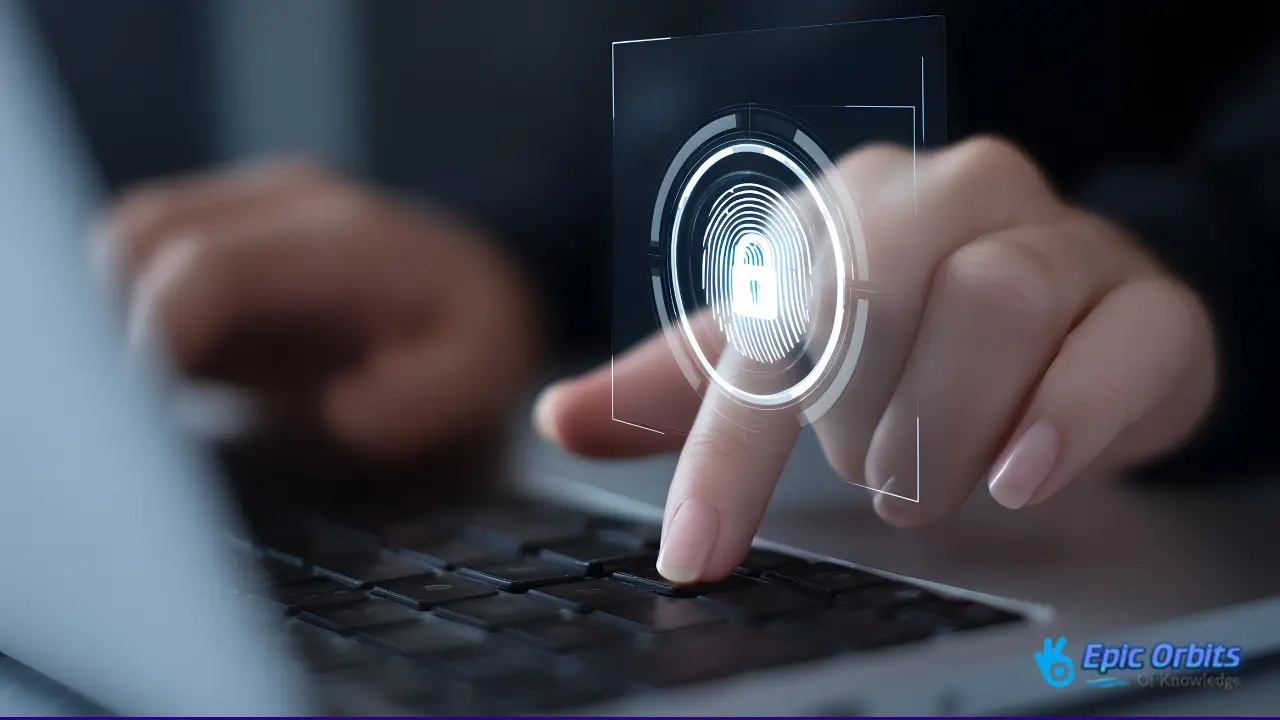How to Protect Personal Data in the Digital Age
Protect personal information online with our step-by-step guide. Get the latest tips on data protection and security.

With 4.7 billion people globally connected to the internet, safeguarding personal information becomes increasingly challenging. Cybercriminals are constantly changing their methods to take advantage of weaknesses and steal private information.
It's important to know the dangers and take steps to protect your identity and data as we move through this complicated digital environment. This detailed tutorial will show you how to secure your personal information on various digital devices and platforms.
You can greatly lower your risk of cybercrime and keep control of your online presence by using these useful tips.
Digital privacy is becoming more and more important
As digital technologies grow more common, protecting personal information has become a primary responsibility. The likelihood of personal information theft increases with our online activity.
Your personal information is important since it may be used for unlawful things like stealing your identity and committing financial fraud. On the dark web, hackers are ready to pay a lot of money for stolen data.
There are many hazards in the digital world, such as data breaches, malware, ransomware, and social engineering attempts. To keep your personal information safe, you need to know about these hazards.
| Threat | Description | Impact |
| Data Breaches | Unauthorized access to sensitive information | Exposure of personal data |
| Malware | Malicious software designed to harm or exploit systems | System compromise, data theft |
| Ransomware | Malware that demands payment in exchange for restoring access to data | Financial loss, data compromise |
Making and keeping strong passwords
As cybercrime changes, it's more important than ever to have strong password management. To keep your personal information safe and stop anyone from getting access to sensitive information without permission, you need to use good password procedures.
A strong password should have at least 15 characters and comprise both capital and lowercase letters, numbers, and special symbols. This makes it difficult for hackers to guess or break passwords using automated methods.
Password managers let you create, store, and automatically fill in complicated passwords on many sites in a safe manner. This makes it easier to remember passwords, which makes the system safer overall.
Using different passwords for each account and changing them often reduces the risk of credential theft. You may want to use passphrases instead of passwords. They can be simpler to remember and still keep you safe.
Some important things to do are
- Use strong passwords as the first step to prevent unauthorized access to your accounts and personal information.
- Safe passwords should be at least 15 characters long and include a mix of capital and lowercase letters, numbers, and special symbols.
- You don't have to remember complicated passwords if you use a password manager to create, store, and autofill them on various sites.
- Using different passwords for each account and changing them often reduces the risk of credential theft.
- Think about utilizing passphrases, which are a string of random words. They may be simpler to remember and yet keep you safe.
- Two-step verification makes accounts safer by requiring you to have something (like your phone) and know something (like your password) to get into them.
Putting Two-Factor Authentication into action
Two-factor authentication is essential for keeping online accounts safe as cyber threats change. This extra layer of protection makes sure that even if a hacker gets your password, they won't be able to get into your account without the second authentication factor.
Two-factor authentication needs two separate things to prove your identity: something you know (like your password) and something you have (like your phone). This two-step authentication approach makes accounts safer.
SMS codes, email verification, authenticator applications, biometric verification, and physical security keys are all common ways to use two-factor authentication. People perceive authenticator applications such as Google Authenticator or Authy as more secure than SMS-based verification because they generate dynamic codes every few seconds.
Setting up two-factor authentication on critical accounts like email, social media, cloud storage, and bank accounts is the best way to keep them safe. This prioritizing helps keep your most important information safe from cyber attacks.
- Turn on two-factor authentication for your bank accounts to keep your transactions safe.
- For a safer way to verify, use authenticator applications.
- Setting up two-factor authentication (2FA) on your email and social media accounts should be your top priority.
How to Keep Your Private Information Safe on Social Media
It's critical to keep your personal information safe on social media these days to be safe online. Social media sites are a big part of our everyday lives, but if you don't use them correctly, they might put your personal information in danger.
To keep your private information safe on social media, you should first check and change your privacy settings. This means deciding who may view your posts, personal information, and contact information. To keep your data private, update these settings often.
It's critical to be careful about what you post online. Don't provide too much personal information, including your entire birthday, home address, phone number, or vacation plans, since thieves might use this information against you. It's also crucial to be careful about who you accept friend requests and connections from since fraudsters sometimes create phony accounts to get your personal information.
| Security Measure | Description | Benefit |
| Software Updates | Regularly update your OS, browser, and apps. | Patches security vulnerabilities. |
| Wi-Fi Security | Use WPA3 encryption and change router passwords. | This ensures the protection of your home network. |
| Mobile Security | Implement screen locks and track your device. | This ensures the security of your phone and data. |
How to Keep Your Private Information Safe on Social Media
It's critical to keep your personal information safe on social media these days in order to be safe online. Social media sites are a big part of our everyday lives, but if you don't use them correctly, they might put your personal information in danger.
To keep your private information safe on social media, you should first check and change your privacy settings. This means deciding who may view your posts, personal information, and contact information. To keep your data private, update these settings often.
It's critical to be careful about what you post online. Don't provide too much personal information, including your entire birthday, home address, phone number, or vacation plans, since thieves might use this information against you. It's also crucial to be careful about who you accept friend requests and connections from since fraudsters sometimes create phony accounts to get your personal information.
| Safe Sharing Practices | Benefits | Risks of Not Following |
| Limit personal details in your bio | Reduces risk of identity theft | Increased vulnerability to data harvesting |
| Use different profile pictures across platforms | Minimizes cross-platform tracking | Enhanced ability for scammers to track you across platforms |
| Be cautious with friend requests | Protects against scammers and fake profiles | Potential for increased exposure to malicious activities |
Think about how what you post online can affect your future jobs or relationships, as your digital footprint might last forever. To manage your digital footprint, you need to be careful about the information you provide and, if required, take measures to reduce your online visibility.
You may greatly lower the danger of data breaches and identity theft by following these tips and being proactive about keeping your personal information safe on social media. In the digital era, it's essential to protect your personal information by regularly checking your privacy settings, being careful about what you post, and keeping track of your digital footprint.
How to Spot and Avoid Phishing Attempts
As hackers change their methods, it's important to know how to spot phishing efforts to keep your personal information safe. Phishing schemes are becoming more and more advanced. They typically seem like real emails from banks, energy providers, or other businesses to garner confidence.
Phishing emails and messages typically exhibit specific warning signs, such as unexpected requests for personal information, urgent calls to action, suspicious email addresses, and grammatical errors. If you are careful with emails that ask for private information or tell you to do anything right away, you can avoid phishing scams.
To prevent phishing efforts, it's important to browse the web safely. It's also important to hover over links before clicking on them to be certain they go to the right URL and to never download files from unknown or suspect sources. It's also important to know how secure a website is by looking for HTTPS and a padlock symbol in the URL bar before you input any personal or financial information.
Before giving up personal information on a website, you should check to see whether it is safe. A simple but effective technique to make sure a site is safe is to look for “https” in the URL and a padlock symbol in the browser's address bar. Real businesses will implement these security measures to prevent information theft.
Using a VPN and staying safe on public Wi-Fi
Public Wi-Fi networks are useful, but they are also quite dangerous for your security. You may lower these dangers by taking the correct steps. It's important to know the risks and how to keep your personal information safe while using public Wi-Fi.
Cybercriminals may more easily get sensitive information via public Wi-Fi networks since they don't always have strong security measures in place. Man-in-the-middle attacks may steal your login information, credit card numbers, and private communications.
- Public Wi-Fi networks are quite unsafe since they generally don't use encryption.
- On public networks, man-in-the-middle attacks may steal private data.
VPNs create an encrypted tunnel for your data, which keeps other people on the same network from seeing what you're doing online. By using a VPN, you may greatly improve your security while utilizing public Wi-Fi.
- VPNs safeguard your data by encrypting it so that it can't be intercepted.
- A VPN may help keep your internet activity secret.
It's critical to be extra careful while utilizing public Wi-Fi to shop or bank online. When you buy anything online, check the URL for HTTPS, check the site's security certificate, and think about using a separate credit card with spending limitations.
- Before you give out personal information, make sure the site's security certificate is valid.
- Use a different credit card with a spending limit for online purchases.
Conclusion
Protecting personal data in the digital era requires a proactive and multi-faceted approach. To keep your personal information secure, you need to use more than one technique of protection instead of just one.
First, do a personal data audit to find out where your sensitive information is kept and who may see it. It's also important to change your passwords often, monitor your account activity, and go over the privacy settings on all of your digital accounts.
Think about hiring services that protect against identity theft by monitoring the dark web for your personal information and notifying you of any data breaches. Teaching family members how to be safe online can also help keep shared accounts and networks safe.
You may greatly improve your data privacy and lower the danger of identity theft by following these procedures and being careful. Your personal data security policy will be successful against new cyber threats if you examine and update it often.



